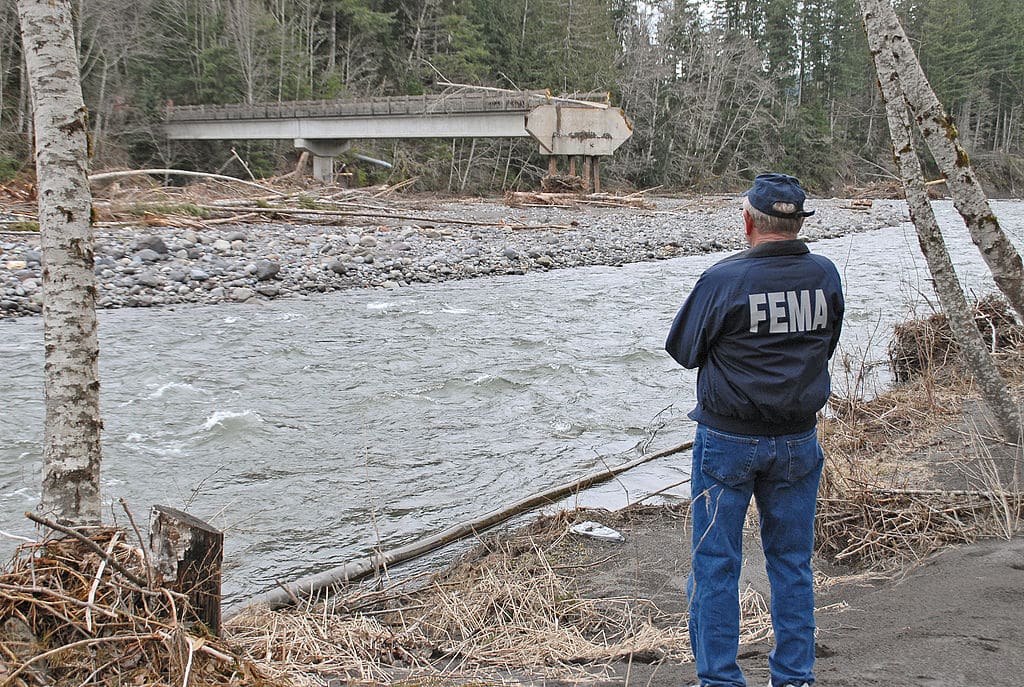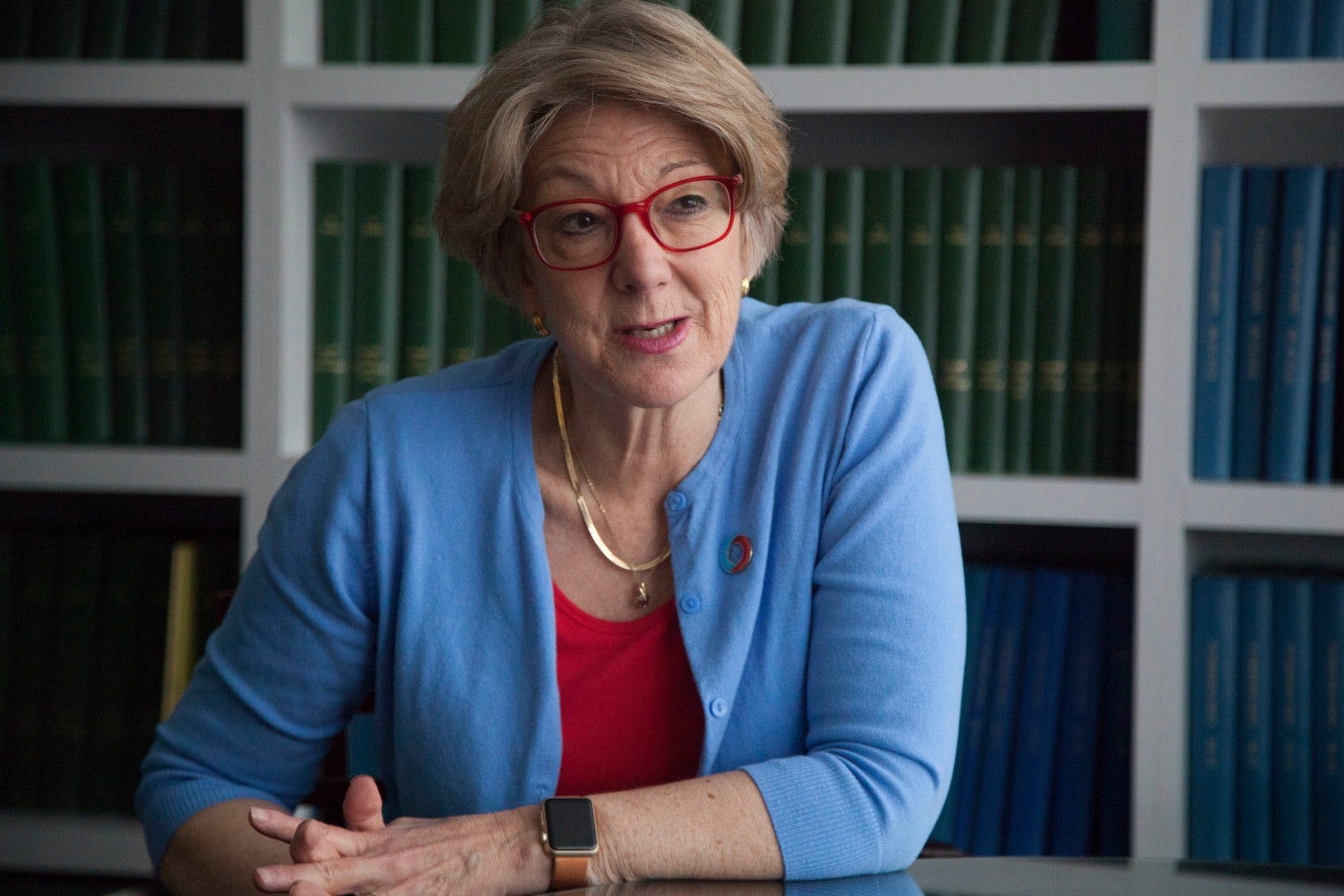It’s 2022 and the 117th Congress rolls on. But what’s really in the realm of the possible right now? In this episode Budget Watchdog AF gives you the lay of the land in Washington D.C. An honest assessment of where things stand on the Biden Administration’s signature social welfare legislation, Build Back Better, and the latest on the federal budget and the appropriations bills that go along with it. Host Steve Ellis is joined by Autumn Hanna and Josh Sewell.
Links to items mentioned in the episode:
- The TCS Build Back Better/FY22 Reconciliation Process tracker can be found here.
- The “Butter Cow” Weekly Wastebasket can be found here.
- Last week’s Weekly Wastebasket on how emergency spending has become endemic can be found here.
Listen here or on Apple Podcasts
Episode 14 – Transcript
Steve Ellis:
Welcome to All American Taxpayers Seeking Common Sense. You’ve made it to the right place. For over 25 years, TCS, that’s Taxpayers for Common Sense, has served as an independent, nonpartisan budget watchdog group based in Washington, DC. We believe in fiscal policy for America that is based on facts. We believe in trans and accountability because no matter where you are on the political spectrum, no one wants to see their tax dollars wasted.
Steve Ellis:
It’s 2022 and the 117th Congress continues to roll on, but what’s really in the realm of the possible right now? Today, Budget Watchdog AF is going to give you the lay of the land in Washington, DC, an honest to assessment of where things stand on the Biden administration’s signature social welfare legislation, Build Back Better, and the latest on the federal budget and the very necessary appropriations bills that are going along with it. To help us catch up and hit the ground running, I’m joined by TCS Vice President, Autumn Hanna. She was our first guest in 2021 and reprising that role this year. Welcome Autumn.
Autumn Hanna:
Thanks Steve. Good to be here in 2022.
Steve Ellis:
And another Budget Watchdog AF frequent flyer, TCS Senior Policy Analyst, Josh Sewell. Good to have you back again, Josh.
Josh Sewell:
Great to be here.
Steve Ellis:
Here at TCS, our team takes great pride in our work on tracking the federal budget and providing unparalleled analysis. Josh, what do listeners need to know about where we are and what’s to come in 2022 on the federal budget?
Josh Sewell:
Well, the first thing to know is we don’t have one yet. Here we are four months into the fiscal year and we don’t actually have a federal budget. Congress hasn’t agreed to anything.
Steve Ellis:
And that’s for 2022, so we’re basically rolling along and don’t have the funding, but yet we’re also coming up on the 2023 budget.
Josh Sewell:
Yeah, we are. So at the end of the fiscal year last year, Congress hadn’t agreed to any funding for this fiscal year, so they had to pass the CR and they passed a four month CR that expires here in the middle of February. We’re actually rolling up on the time when normally the President would be releasing his budget request for fiscal year ’23.
Steve Ellis:
And CR is a Continuing Resolution to just extending funding at last year’s spending levels.
Josh Sewell:
That’s right. Essentially, much of the government is running on autopilot, basically spending at the exact same levels as last year. There’s a few exceptions here and there, but for the most part, agencies, it doesn’t matter if your priorities changed, got a few new things going on, you’re still spending at last year’s budget levels.
Autumn Hanna:
And there was some committee action last year in the House and Senate on appropriations, but they weren’t able to get anything across the finish line. Now, we’re looking at trying to do either another continuing resolution, another stop gap funding solution, or putting a bunch of things together in some sort of omnibus.
Steve Ellis:
We’ve talked about continuing resolutions before about how they’re not good. And actually, last week there was a hearing in Congress talking about how dire a continuing resolution would be for the Pentagon. But in reality, they’re not any exception are they? I mean, it’s a bad deal for government writ large to be operating under this sort of autopilot funding from the previous year’s level.
Josh Sewell:
Yeah, absolutely because things change in a year. I mean, I think the experience with COVID-19 can show anybody that some things come up that you hadn’t planned for, but other things that you see on the horizon are there and so agencies need to be able to adjust. And if you’ve ever been involved in the federal budget planning process, it’s a very long process and it normally starts almost as soon as the appropriations bills are passed, the next year’s budgeting starts. So there’s a lot of thought that goes into, in each agency, figuring out what their requirements are, what they need to do. And when Congress drops the ball and doesn’t actually get back to those agencies and say, “This is final spending level,” then frankly, nobody from the USDA down to the Pentagon can get the money out the door where it’s needed, so you end up having some places where you need to spend more that you don’t have the funds and other places you’ve wasted money because maybe something you were doing last year is no longer a concern.
Josh Sewell:
And let’s be a little fair, the House and the Senate are two different beasts in this right now. The House did pass all of its bills, at least through committee, so every committee subcommittee, there were 12 appropriations bills and all got passed in July, some early August, I think. Well, a couple in late June, but they didn’t get to the House floor. And in the Senate, the Senate got three bills done just through committee. Again, they had all year to do it and they were pretty deliberate in not doing much.
Steve Ellis:
When you think about it too, I mean, it’s just not knowing your funding levels, it’s that this impacts hiring, this impacts… I mean, maybe it isn’t a lot of travel during a pandemic, but travel decisions. Other investments all get held up. At some point, whether it’s in February or even later, they’re finally going to get their final spending levels. And for most agencies, it’s going to be, a lot of agencies anyway, it’s going to be a bump from what they got in 2021. And yet, they’re going to have a much shorter span of time to spend that money, that extra money. They’re only going to have about six months or so instead of a whole 12 months and that’s just inevitably going to bring about waste.
Josh Sewell:
Yeah, absolutely.
Autumn Hanna:
I will say that we want them to get on process here with budgeting, but to preview this week’s Wastebasket for folks to look ahead on Friday, Wendy Jordan, also a regular guest on the podcast, will be to talking about the impacts the CRs have on the Pentagon budget and how there are a lot of myths circulating around that impact. As we know, that agency has some issues with passing an audit and spending and so sometimes limiting budget increase opportunities isn’t a bad thing.
Steve Ellis:
Good cross promotion there, Autumn. You can subscribe to The Weekly Wastebasket, it’s free, and you can do that at www.taxpayer.net and continue doing these podcasts as well. If somebody shared this with you, please subscribe and make sure you’re getting Budget Watchdog AF. So before we move on to the big dog, the BBB, one last thing on the President’s FY ’23 budget. That’s normally supposed to be in February, but we’ve heard that that and the State of the Union has been pushed back.
Josh Sewell:
The latest we have heard is that the State of the Union is going to be pushed back until March 1st, which is also pushing back the President’s budget request into mid to late March.
Steve Ellis:
We’ll certainly be looking forward to that as budget nerds. And not only that, it’s going to be prime podcasting and a lot of information to share with you Budget Watchdog AF listeners. Okay. So as promised, moving to the BBB. From the looks of things, Build Back Better, the centerpiece of president Biden’s legislative agenda, is dead. Not dead dead, most certainly dead, right? Autumn and Josh, this package is big enough for both of you to talk about it, so what’s the story. Is it dead or is nothing ever really dead in Washington?
Josh Sewell:
Nothing is ever truly dead in Washington. Certainly, this has been an up and down for people who, whether you support a lot of that’s in the Build Back Better agenda or you oppose it, it’s been a roller coaster ride. And for those of us who are knee deep in this,trying to get certain things in and many things out, it has been quite the ride.
Autumn Hanna:
Right. There’s still a lot of rumblings in Washington, but it did look like the Build Back Better Act was dead in December, but we are still hearing a lot of rumblings. Back in November, the House had passed the $2.2 trillion version of the Build Back Better Act and they volleyed it over to the Senate. Now, that package was pretty big. It included healthcare issues, childcare access, universal pre-K, the Child Tax Credit, so all these things along with 555 billion in climate funding. It was a big package and I think, although the House expected the Senate to move on that and there were a lot of negotiations, Senator Manchin ended up publicly opposing the bill and saying he wasn’t going to support it, so that pretty much killed the opportunity for it to happen in December.
Autumn Hanna:
Since then, there’s talks of some version of what we saw from the House, something trimmed back. I think there is a lot of openness among certain folks, especially there’s some house Democrats just lately talking about how they’d really like to see something done and are interested in working with Senator Manchin to even think about trimming some stuff down, but in the Senate, really, we haven’t seen any significant movement yet. They’ve been really tied up with voting legislation. As we know, voting rights has been a big issue. The filibuster debate. Those issues have taken center stage lately, so we haven’t seen any concrete action, but there definitely is an opportunity, based on what people have said they support, that something smaller could happen.
Autumn Hanna:
I mean, Senator Manchin has voiced support for the tax breaks in the bill. There’s $320 billion in clean energy tax breaks. We have some concerns about that portion of the bill, as folks might imagine. Clean energy includes nuclear power, hydrogen, carbon capture and storage. Many of these things we’ve raised concerns about being black holes for taxpayer subsidies, but that is something that has a lot of support. Tax preferences generally get bipartisan support and that’s something that Senator Manchin has said he supports. There’s also a portion of the bill that was released on December 17th that comes from Senator Manchin’s committee, so he’s chair of the Senate Energy and Natural Resources Committee, so these are provisions he does support. We are looking at that as something that would be included in any smaller trimmed down version of Build Back Better. And in particular, there are some reforms in there that we really like.
Steve Ellis:
Let me just step in there for a second there, Autumn. We’ve now mentioned Senator Manchin several times and he’s just one member of the Senate. What gives him such outsize influence over this whole package? What is his role and one of his other colleagues as well?
Autumn Hanna:
Well, I think it’s important to look at the process that this Build Back Better Bill is going through. We have a 50/50 Senate and this is a good time for the sort of Budget Reconciliation 101.
Josh Sewell:
Well, yes. So again, in a Senate that’s 50/50, most things in the Senate require 60 votes to get passed. So in a evenly divided Senate, unless there’s broad agreement, you’re not going to get me much done so that’s when you get into this budget reconciliation process. This is a special maneuver, a special process that’s been built into the federal budget that Congress can go through a reconciliation process, which means essentially that they deem certain changes, certain spending levels, certain changes in revenue and then each committee of jurisdiction meets its target. They cobble together these what end up becoming large pieces of legislation, but the kicker is that it only needs a 50 plus one votes to pass.
Josh Sewell:
So in the 50/50 Senate, if all 50 Democrats, or people that caucus with the Democrats, agree, then the tiebreaker becomes the Vice President, who unsurprisingly as a Democrat, is going to vote with the majority. That’s what this whole process has been predicated on is knowing that in this environment with Republicans telegraphing ahead of time that they were not going to be supportive of much of the spending that was proposed by President Biden that would become this BBB, Democrats said, “Okay, we’re going to do this process and we just have to, in our caucus, agree on the provisions,” and that’s what’s been guiding this the last few months. In some ways, we’re coming up on a year of this whole process actually.
Autumn Hanna:
Right. That’s why you can see Senator Manchin’s influence here as Chair of the Senate Energy and Natural Resource Committee. He has a lot of jurisdiction with all the sort of climate energy pieces. He’s also raising a lot of other concerns about the size of the overall package. He’s wanted things $1.8 trillion instead of $2.2. So all along, he’s been saying these things raising concerns, while other Democrats have been generally supportive with a couple of other exceptions, most notably Senator Sinema from Arizona.
Josh Sewell:
The silent partner, Senator Sinema, in this who… because she has not said a whole lot publicly, at least for the first few months, about what she did or did not want in the bill. But if you Senatese, ease the language of the Senate, you can see that there are members that are out there starting to say what their priorities are in the bill, but also how this process, the reconciliation process, which, again, is a part of the budget process and has been used dozens of times on large bills and on slightly smaller bills since it was created almost 40 years ago as a process, but there’s also the general questions about the filibuster and the roles of Senators and how you want to move forward. And of course, when you have 100 senators, they’re all thinking of their own reelections and their own legacies and how this ties into other priorities that they have because they’re going to be around for a while.
Josh Sewell:
It’s a complicated process, but, again, I think it all comes back to nothing’s dead until this Congress is over. Until there’s an election and there’s new Senators, this thing is still alive, including this particular reconciliation process.
Steve Ellis:
Well, certainly this administration is interested in getting a win. As one lawmaker put it, “t’s not Build Back Better, I’ll be Built Back Something.” I think that they may do this whole chopping it up into smaller packages, seeing what will get through, what can stick, but you still have to kind of put it all together for the reconciliation. You only get one bite at that apple, so it’ll be interesting to see.
Steve Ellis:
And I think, Josh, you were mentioning that some of the concerns about the score and I saw that one of the things that Senator Manchin was talking about is he wanted the full 10 year score instead of having the gimmick that things expire early and so they don’t cost as much, wanting to throw the ref’s flag at that, which, of course, was definitely a huge part of the 2017 tax cut that passed under reconciliation that where virtually all of the tax provisions on the individual side of the ledger were supposed to expire by 2025, 2026. Clearly, that was a gimmick to be able to hold down the cost of the package, but then to still proffer all of these treats to the various individual taxpayers.
Autumn Hanna:
As folks can probably tell from our conversation, there are a lot of pieces in the Build Back Better Act. We do have a website that… a budget reconciliation resource page on our website, just to plug another one of TCS’s products, and you can see their different provisions and you can also see our overarching principles and the things that we think are best for taxpayers in pursuing a Build Back Better Bill or some sort of larger budget process. I mean, obviously we have voiced concerns about climate liabilities for taxpayers, climate costs, other things that need to be addressed and Congress should be doing. And no process is perfect, but we go through there and evaluate different provisions within the current… within the House passed $2.2 trillion. We sort of date things and people can sort of understand more how this massive piece of legislation came together and has changed over time on that resource page.
Autumn Hanna:
You can also see, I’ll put in one more plug for, there are some good reforms on oil and gas and the Build Back Better Bill has given us another way to talk about the concerns we have with oil and gas leasing program. So in that sense, that little piece of this has been positive for us. Senator Manchin shares our concerns on oil and gas leasing, many of those concerns, and those provisions for reform were included in that energy and natural resources draft text that came out on December 17th. So in that piece of the Senate bill we talked about earlier, and I will note that was our inaugural podcast was talking about oil and gas leasing.
Steve Ellis:
Thanks, Autumn. You’re listening to the Budget Watchdog All Federal, the podcast dedicated to making sense of the budget, spending and tax issues facing the nation. I’m your host, TCS President, Steve Ellis. So at one time, inextricably tied to the BBB, lawmakers cut that legislative Gordian knot and passed the BIF, the Bipartisan Infrastructure Framework, into law. What’s the status of that? Where’s the money going, Josh, or even when is it going?
Josh Sewell:
Well, it seems like ancient history, way back in the fall when that bill was adopted and then signed into law by the President, but it’s moving. Some of it fast, most of it slow. The President has appointed Mitch Landrieu, former Mayor of New Orleans as… you can call him Chief Open Invitation Officer or some other title, but he’s essentially the infrastructure czar to sort of help facilitate some of the moving parts within the federal government. And also, a lot of the money is going through the Transportation Department. What was important to know about this Bipartisan Infrastructure Bill… Because it was bipartisan, there were 17 Republican Senators and all 50 Democrats, the two independents who caucus with them. It got broad support because it’s more of a traditional bill. It’s actual physical infrastructure, what there’s still agreed to as, by most folks, infrastructure. It did not get into some of the human infrastructure as Democrats have called, some of the social spending that’s in the Build Back Back Bill.
Josh Sewell:
It’s really important to understand that a lot of media reports talk about a $1.2 trillion Infrastructure Bill. In reality, half of that was going to happen in one form or another when they passed the Highway Bill. So basically, I think it was about $580 billion of the total 10 year, again, 10 year price tag of this bill, was actually… it’s formula based. It’s coming from the Highway Trust Fund or the money we back fill into the highway trust fund, but it’s these accounts that were going to happen when Republicans and Democrats eventually agree to do some sort of highway and mass transit bill. Now, there is some new money, but, again, you got to really dig through the numbers because on things that are popular, like infrastructure, lawmakers will often inflate the numbers because they like a trillion dollar bill there, as opposed to deficits or other things where they may undercut and pretend like the money’s not there.
Steve Ellis:
But it’s still $500 billion. And until we started passing trillion dollar relief packages and things along those lines, that was still pretty significant money. I mean, it is a substantial package and certainly the Surface Transportation Bill was the engine that helped it along and certainly helped to get bipartisan support.
Josh Sewell:
Yes, that’s true and it is significant because in many ways you will be doubling the annual spending in some of these accounts. But again, it’s also over eight to 10 years, depending on how you look at it. Some of these programs are authorized for eight years. So even if you’re are doubling the spending, if you’re taking that long, the impact is not going to be seen or felt immediately because it’s infrastructure. It takes a long time to build. It takes a long time to contract, let alone build and disperse the money, so that money will be trickling into the economy. In comparison to the size of our economy, in some ways it really will be a trickle in later years, but it’ll be going on for the next eight years at least.
Steve Ellis:
Well, I can guarantee you, Josh, there’s going to be a lot of ribbons cut before November and so that part of it will be happening. We’ll keep watching on that and tracking that funding. Budget Watchdog AF listeners know that the American Recovery Act, President Biden’s COVID Recovery Bill, actually passed with surprising ease at the beginning of 2021. Since then, you’ve had the Delta variant, the mess in the Afghanistan withdrawal and an inflation spiral that really sucked the wind out of the President’s legislative sales and kind of left him in this position where he is with the BBB and other legislation. I didn’t even mention Omicron. The “Go Big or Go Home” mantra is over in this session of Congress. Recognizing there’ll still be some form of the BBB that’ll likely move, what small ball wins are still possible in this election year, if any?
Autumn Hanna:
I think it’s going to be a challenge to get smaller packages through as the year gets later, we get closer to the midterm elections. We have a short window to get our house in order with appropriations and move on some sort of modified Build Back Better if they want to do that. And hopefully, they will be looking out for taxpayers as they do that and not just throwing more money at more people to try to bring them in. But I think as our initial wastebasket out of the gate on resolutions shows there’s a lot of stuff that happens that can fill time if you can’t get the hard work done, so I would note that folks should check out that Wastebasket if they want a good laugh.
Steve Ellis:
Yeah, tell them about the butter cow, Josh.
Josh Sewell:
Oh, butter cow. That’s just way too important for me to handle. You should take care of that, Steve, but there is an opportunity. The continuing resolution that maintains the spending levels at last year’s, it expires on February 18th. I can guarantee that there will be some anomalies. There will be something on there, especially if the Democrats decide that it just looks like they’re not going to make progress. They’re going to find some of those smaller, still large probably, but smaller pieces that they can cleave off and put in there. And also, we’ve had disaster supplementals every year now for four years, five years in a row. It’s a [inaudible 00:21:03]. That’s a time where sometimes some of it is look legitimate, but if you look at last week’s Wastebasket, we actually talked about how emergency spending is becoming endemic. Technically, it’s not really an emergency anymore, some of it, and so there’s definitely some opportunities.
Josh Sewell:
One other thing we could do, let’s do a Farm Bill. Why not? We have time to do that. And there’s been some rumblings about that in Congress, but I do think that what you could see is there is a lot of spending that was proposed in the Build Back Better, or still being proposed, including $37 billion in ag conservation spending and focused on mitigating climate and another almost $50 billion or so in the forestry section. That’s all about how to ways of adapting to climate change. I do think with Democrats in control of the House and the Senate and the presidency, especially again, if it does like they’re going to lose one or more chambers in the fall, then you might see some elements of the, especially that climate bending to get some wins where they can. It’s going to be a dynamic year, one way or the other.
Steve Ellis:
That is where you have the other side of that equation is that is if as the Republicans start feeling their electoral oaths, they’re going to be less willing to go along or less willing to concede some of these wins if they really think that they’re going to be able to be in charge of one or both chambers next Congress and that’s the tension that you’re going to find. And really, the Democrats trying to pick things that are big winners, big energizers as well. And about that butter cow. We were talking about some of the resolutions that Congress does to take up their time, naming various things, and it was basically that National Butter Day was in November and that was something that your law makers decided it was important enough to spend time, designated a certain day as National Butter Day. Butter cows everywhere rejoice.
Steve Ellis:
Well, there you have it. The dynamics on Capitol Hill are always changing and Americans, taxpayers will always have a seat at the table with TCS on the Budget Watchdog Beat. This is the frequency, mark it on your dial, subscribe and share. And know this, Taxpayers for Common Sense has your back, America. We’re reading the bills, monitoring the earmarks and highlighting those wasteful programs that poorly spend our money and shift long term risk to taxpayers. We’ll be back with a new episode and I hope you’ll meet us right here.










